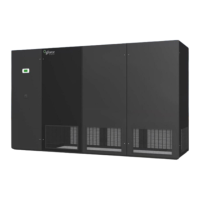13
unit.
• Allow enough space around the unit for removing the access panels and various parts
of the unit. A minimum clearance equal to the width of the unit is suggested on one side
of the unit for removing the coil or fan assembly. Add dimension of pipe chase, ducts,
control and electrical panels, etc. to minimum clearances. Allow additional clearance as
required by local and national codes.
• It is also necessary to consider access requirements for safe operation and
maintenance of the unit, and power and control panels. Local health and safety
regulations, or practical considerations for service replacement of large components
(such as coil), may require larger clearances.
• Clearance dimensions provided elsewhere are necessary to maintain proper service
access. If clearances given are not maintained, service the unit will be more difficult or
impossible maintain.
Room Considerations
Precision air conditioning equipment is designed to control spaces within close tolerances of
temperature and humidity. However, the room must be built with a proper vapor barrier. A film
of polyethylene is often used on walls and ceilings. Walls and floors must also be painted with
vapor-seal paint. Failure to provide a vapor barrier can compromise space conditions.
Introduction of outside air into the space should be minimized. Outside air in excess of 5% of
the total circulated air volume can have a significant effect on the overall space conditions and
result in poor space control.
• Install the units as close as possible to the largest heat load.
• For floor units, verify that the floor is level, solid and enough to support the unit. The
equipment must be level to operate properly and prevent damage to the internal
components. Shimming and/or grouting may be necessary. This is to ensure the unit
base is on a perfectly flat plane.
• It is recommended that support is structurally engineered to prevent flexing, sagging or
twisting. Do not obstruct door operation, filter access, piping, electrical control panel or
control connections.
• Avoid the transfer of vibrations to the mounting materials which may cause audible
noise.

